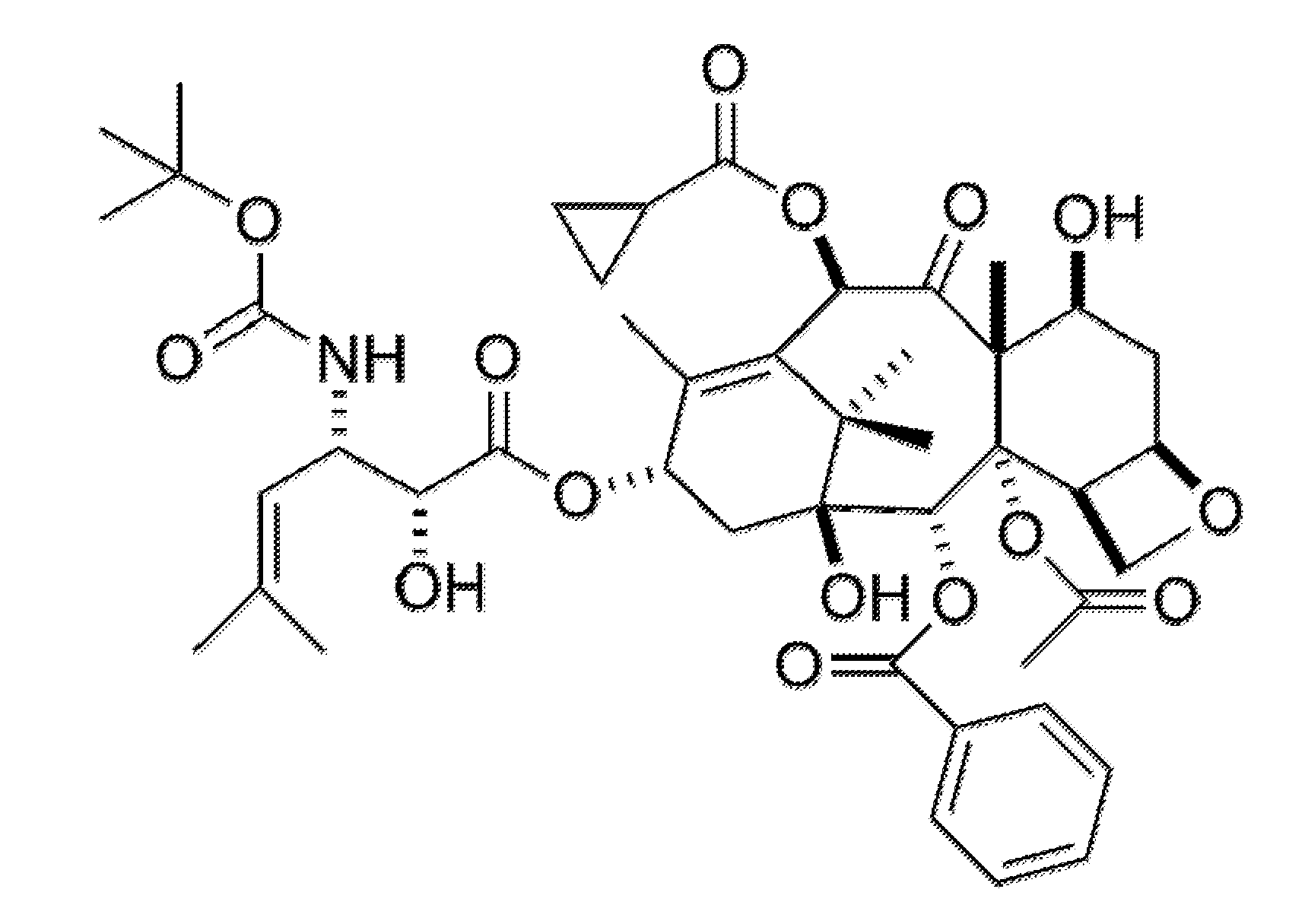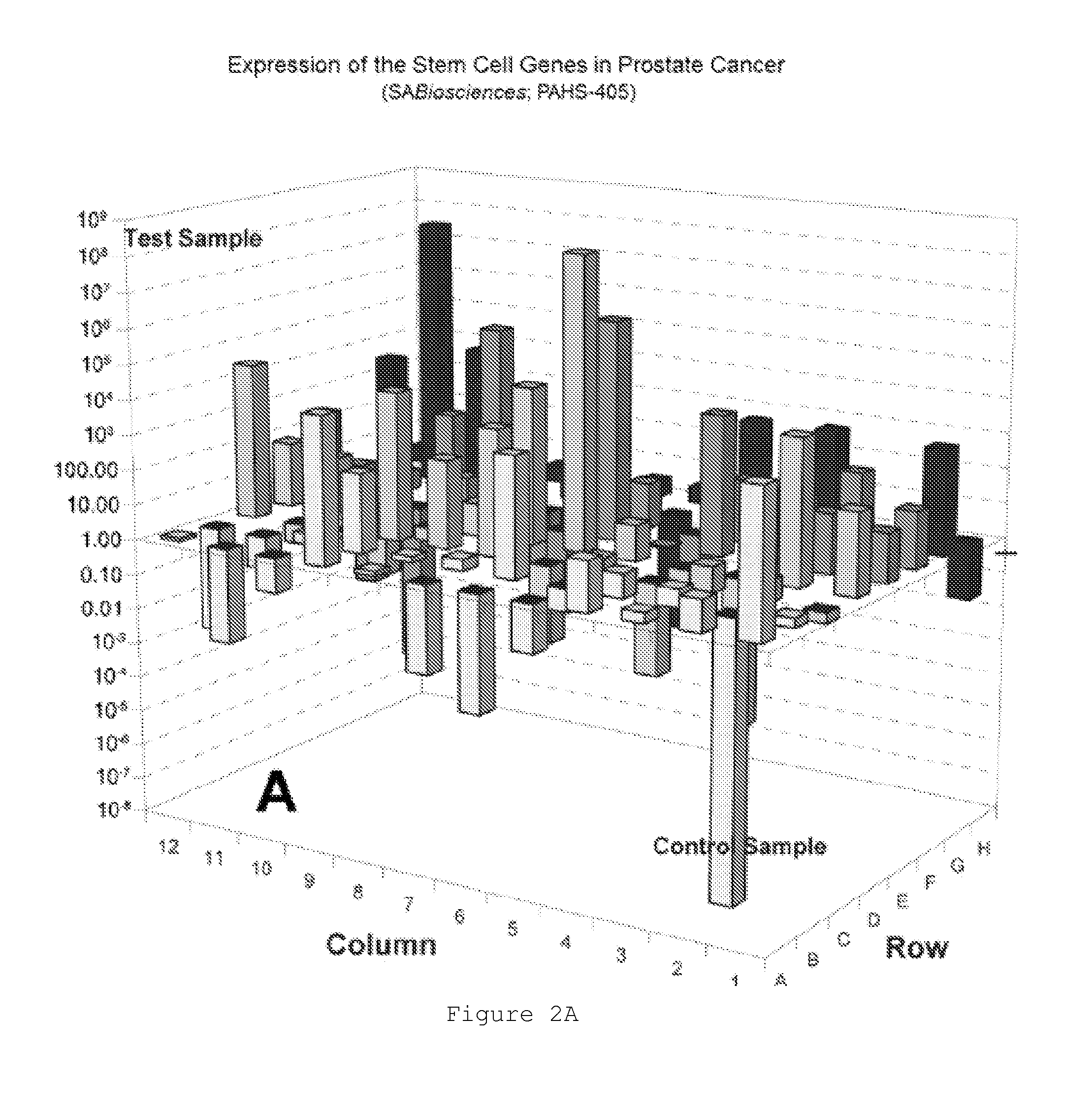Polyenolic zinc-binding agents (pezbins) actively promote inactivation of cancer stem cells and potentiate cytotoxic Anti-tumor drug substances
a technology of cytotoxic anti-tumor drugs and polyenolic zinc, which is applied in the direction of biocide, biochemistry apparatus and processes, drug compositions, etc., can solve the problems of ineffective conventional therapies, no known cure, and metastatic epithelial cancer, and achieve the effect of inhibiting the growth or promoting differentiation of cancer stem cells
- Summary
- Abstract
- Description
- Claims
- Application Information
AI Technical Summary
Benefits of technology
Problems solved by technology
Method used
Image
Examples
example 1
TF Expression Profiling for Human Prostate and Colon CSCs
[0308]A discrete subpopulation of highly tumorigenic cells that, according to current criteria of stemness and our functional genomics and proteomics studies, are cancer stem cells (CMCs) that have been identified and characterized (Rowehl et al, 2008; Botchkina et al, 2009; 2010; Botchkina & Ojima, 2011). In such cells isolated either from primary prostate and colon tumors or from highly metastatic cancer cell lines, overexpression of a large number of stemness-related genes and transcription factors (TFs) involved in stem-cell (SC) regulation and functioning, cancer development, metastasis and drug resistance, have been found (FIG. 2).
[0309]In particular, genome-wide and pathway-specific studies have demonstrated that such cells possess many other stem-cell characteristics, in particular, over-activated tumorigenic and developmental cascades, such as Hedgehog, EGFR, Wnt / β-catenin and Notch linked with the stem cell regulatio...
example 2
CMC2.24 Down-Regulates CSC Relevant TFs
[0313]CMC2.24 induces profound inhibition of the majority of CSC-relevant transcription factors in highly aggressive colon cancer HCT116 CD133+ and prostate xPT2 CD133+ cells. Importantly, majority of the overactivated TFs were suppressed, including CDX2, DLX2, EGR3, FOXP3, GLI2, HOXA2, HOXA7, HOXB3, HOXB8, HOXC10, HOXC9, HOXC6, HOXC4, HOXC5, IRX4, JUN, KLF2, NFATC1, NR2F2, PITX3, POU5F1, RUNX1 and WT1 (FIG. 3).
[0314]Effects of CMC2.24 on several key TFs were tested with the western blot assay, which has confirmed PCR array data, showing dramatic inhibition of these proteins in both nuclear and cytoplasmic fractions (FIG. 5).
example 3
CMC2.24 in Combination with SBT1-1214 Down-Regulates CSC Relevant TFs
[0315]FIGS. 3 and 4 demonstrate that CMC2.24 in combination with other anti-cancer drugs, such as the new generation taxoid, SBT-1214 (FIG. 6), can induce profound inhibition of the majority of CSC-relevant transcription factors in colon cancer HCT116 CD133+ and prostate xPT2 CD133+ cells. Importantly, 56% of the overactivated TFs were suppressed, including CDX2, DLX2, EGR3, FOXP3, GLI2, HOXA2, HOXA7, HOXB3, HOXB8, HOXC10, HOXC9, HOXC6, HOXC4, HOXC5, IRX4, JUN, KLF2, NFATC1, NR2F2, PITX3, POU5F1, RUNX1 and WT1.
[0316]It was determined that SBT-1214 / CMC2.24 combination induces profound inhibition of the CSC-enriched prostate and colon cancer cell populations, including highly tumorigenic and clonogenic patient-derived CSCs. Although shortly after drugs removal we have observed enrichment of the large multinucleated cells-treatment survivors, these drug resistant cells became quiescent, expressed multiple morphologica...
PUM
| Property | Measurement | Unit |
|---|---|---|
| Structure | aaaaa | aaaaa |
| Electrical resistance | aaaaa | aaaaa |
| Pharmaceutically acceptable | aaaaa | aaaaa |
Abstract
Description
Claims
Application Information
 Login to View More
Login to View More - R&D
- Intellectual Property
- Life Sciences
- Materials
- Tech Scout
- Unparalleled Data Quality
- Higher Quality Content
- 60% Fewer Hallucinations
Browse by: Latest US Patents, China's latest patents, Technical Efficacy Thesaurus, Application Domain, Technology Topic, Popular Technical Reports.
© 2025 PatSnap. All rights reserved.Legal|Privacy policy|Modern Slavery Act Transparency Statement|Sitemap|About US| Contact US: help@patsnap.com



